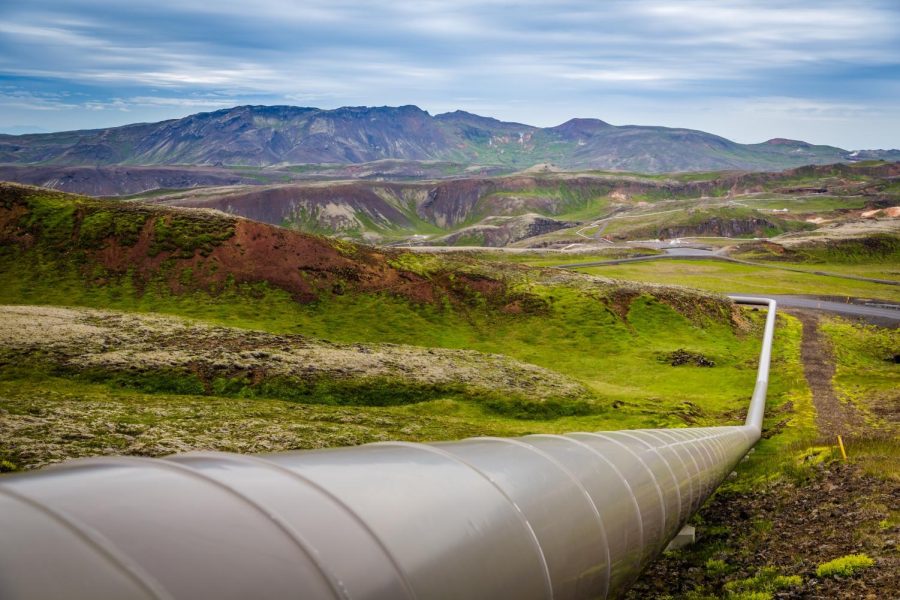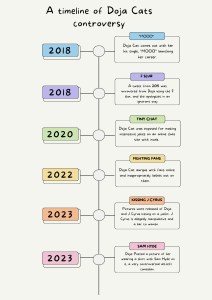The Willow Project gets approval
Mike Benna, courtesy of Unsplash
A pipeline stretches through a rural area.
March 16, 2023
The Willow Project is an oil drilling operation that went into effect in Alaska after being approved by the Biden administration and the Department of the Interior on March 13. The $6 billion proposal is a decades-long venture that could potentially see 600 million barrels of oil being removed from the Earth. The company behind the operation is ConocoPhillips: the biggest crude oil refining company in Alaska.
The Willow Project will be located in the National Petroleum Reserve-Alaska (NPR-A), a 23-million-acre region on the North Slope of Alaska that was designated by Congress in 1976 for its potential as a source of oil and gas. The area is also home to a variety of wildlife, including caribou, musk oxen, and migratory birds, as well as indigenous communities who rely on the land for subsistence hunting and fishing.
The Biden administration has approved an altered version of the operation that began Tuesday. The construction of three drilling pads was approved out of five that ConocoPhillips proposed, but not without some consequence. 16 Million acres of land and sea in Alaska reserved for oil and gas production were blocked from future drilling by the administration.
Some Alaskan officials feel slighted by the order.
“Taking future oil production in Alaska off the map won’t decrease global oil consumption. It will just shift the market and give leverage to producers in countries that don’t have our high standards for the environment and human rights. In the end, every American pays the price when President Biden restricts our ability to develop our own energy resources,” says Alaska Governor Mike Dunleavy.
Alaska natives are torn over the project’s proposal. Some Alaskans believe the project will bring a much needed season of economic prosperity for the state.
According to alaska.gov, “Willow is expected to create as many as 2,500 jobs during construction and 300 permanent jobs. The project is expected to produce about 180,000 barrels of oil a day at its peak and generate at least $8 billion in revenue for federal, state and local governments.”
Alaska Representative Mary Peltola (D) spoke out in favor of the project at a rally in which she said “[The Willow Project] will help the state of Alaska, it will help residents across our state, in every school, public safety, public transportation, it will help the nation.”
Indigenous communities in the region have expressed concern about the impact of the project on their way of life and their ability to practice subsistence hunting and fishing.
Rosemary Ahtuangaruak, an Inupiaq activist and former mayor of Nuiqsut, a small community close to NPR-A, says, “My hometown, Nuiqsut, is the closest town to the proposed Willow Project, and we have the most to lose. Our people feed their families with traditional subsistence activities like fishing and hunting caribou, moose, birds, and more. The Willow project’s massive infrastructure would bulldoze straight through these crucial habitats, redirecting the animal’s migratory paths, moving them away from nearby villages, and endangering the food security of local people.”
Environmentalists across the globe are pushing for the project to be scrapped. Backlash quickly spread online over social media, especially on TikTok, with videos about the project garnering hundreds of millions of views under various hashtags like #willowproject and #cancelwillowproject. The main criticism of the project is that it would release over 260 million metric tons of greenhouse gasses into the atmosphere.
Many environmentalists are satisfied with the preventative measures the Biden administration took to limit future drilling in the Arctic, but some believe it is not enough. “These are positive steps, and we applaud them. However, they cannot compensate for the harm and disruption to the climate and to the Western Arctic and its residents that Willow would inflict for years to come.” Said Jackson Chiappinelli, an environmentalist with Earthjustice.com.
The approval also comes with requirements that ConocoPhillips must use electric drilling rigs, reduce greenhouse gas emissions, and engage in wildlife monitoring and protection measures.
The approval of the Willow Project by President Biden highlights the ongoing tension between economic development and environmental protection in the United States. While the project is expected to provide economic benefits to the region and the state of Alaska, it also has the potential to cause significant harm to the environment and Indigenous communities. It remains to be seen whether the conditions placed on the project by the Biden administration will be sufficient to mitigate these risks.









